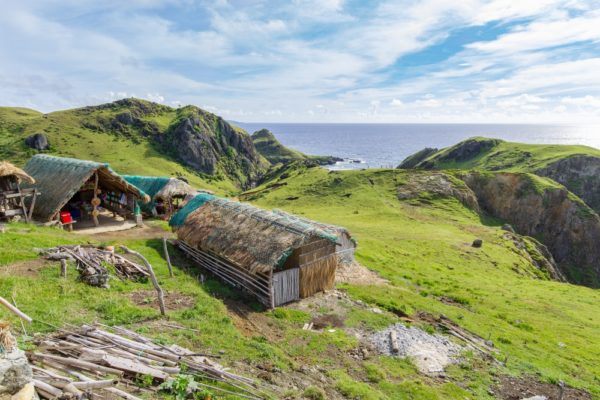Why do the Batanes Islands belong to the Philippines?
August 12, 2020 · By Jorge Mojarro for www.manilatimes.net

Why do the Batanes Islands belong to the Philippines?
UNLESS there is a movement for independence rooted in a concrete region, which forces citizens and politicians to reflect about it and solve the problem – if solvable – people take for granted the integrity of the national territory. Most of the world borders today aren’t natural, but largely a consequence of the intervention of imperial powers. The Philippines is not an exception to this, and the lack of loyalty and weak allegiance of certain provinces to Malacañang nowadays can be historically traced.
Batanes is one of the most fascinating and beautiful places in the Philippine archipelago, which is a merit in itself, taking into consideration that there is high competition for that distinction in the country. Moreover, inhabitants of the archipelagic province are known to be calm, patient, disciplined, hardworking and honest, which could have been a consequence of the relative isolation they have been living with for centuries and the development of a strong sense of community, but also, maybe, could have been the best way to deal with the strong typhoons that hit the islands every year.
Although Batanes geographically lies between Northern Luzon and Taiwan, its group of islands are actually a little bit closer to Taiwan. Contact with its northern neighbors might have been frequent in pre-Hispanic times, since the Batanic languages are strongly linked to other branches of Austronesian languages still spoken by the indigenous groups. A visit to the Shung Ye Museum of Formosan Aborigines in Taipei, the capital of Taiwan, might suffice to see the evident cultural similarities between the indigenous people of Luzon and Formosa, the name given by 16th century Portguese sailors to the “beautiful island” of Taiwan.
A Dominican friar, Fr. Mateo González, working in the missions of Babuyanes was responsible for the establishment of the first strong link between Batanes and the rest of the Philippines. Observing the Ivatan people that frequently came to Babuyanes to trade, Fr. González finally set to make a visit to Batanes in 1686 with a companion, Fr. Diego Piñero. Seeing the good disposition of the people to admit a priest to live among them, Fr. Piñero stayed in the islands while Fr. González went to Manila to request permission from the ecclesiastical and civil authorities. Despite the scarcity of friars and money, his petition was accepted two years later, and Fr. González went back to Batanes with another companion, Fr. Juan Ruiz, who had been working previously in the missions of Zambales.
It must be reminded that navigation to Batanes at that time was extremely difficult – as it is still today – but both natives and friars did not mind the risks involved.
Father González died just eight days after arriving in Batanes while Fr. Ruiz died two months later. The promising new mission was left unexpectedly dismantled, and Fr. Piñero, being alone again, traveled to Cagayan in order to convince another friar to accompany him to Batanes but without success. Therefore, the Ivatans were left alone again. However, the Dominican priests must have left a very positive impression among the people since when Fr. Juan Bel visited them thirty-one years later in 1719, the friar was welcomed with expressions of joy, and the people said they had long been waiting for him. They even asked if God was angry with them since they did not pray as their neighbors in Babuyanes did. At least, this is what the Dominican sources say.
Fr. Bel went to Manila to ask for help to reopen the mission in Batanes. His request was granted, and he went back to the islands in 1720 along with Fr. Alonso Amado. As there was a strong typhoon which destroyed the crops, people started to starve, and the Dominican friars thought of transferring the people to Calayan Island (Babuyanes) and Cagayan where food was more available. However, good intentions did not work. Many natives and friars died during the transfer due to big waves, and once settled, the Ivatans did not adapt to the new land and the new people. After a few years, many of them returned to Batanes. Nostalgia for the land of their ancestors was far stronger than any pragmatic consideration, and they preferred to live in their islands even if they had to endure scarcity.
During the succeeding years, contact between Batanes, Babuyanes and Cagayan increased with periodic plans to reopen Dominican missions among the Ivatans always being canceled for different reasons. It was not until 1783 when Governor-General Jose Basco decided to send a peaceful expedition of nearly 70 people with soldiers, carpenters, ironsmiths, manual workers and the designated Lieutenant-Governor of Batanes, Joaquín del Castillo. As soon as they arrived, they were much welcomed by the natives. Needless to say, there were two Dominican friars in the expedition, Fathers Calderón and Artíguez. Of course, problems arose afterwards, and the natives regretted being very welcoming to the foreigners, but it was too late. Since then, the fate of Batanes has remained politically linked to the Philippines.






